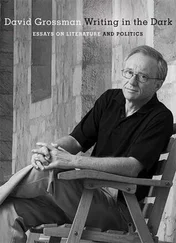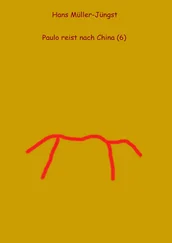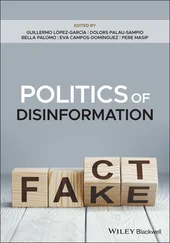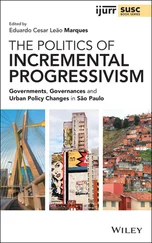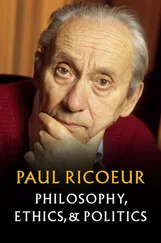Feminist movements in the 1960s also played a pivotal role in the development of prefigurative politics, as currently understood. The famous slogan ‘the personal is political’ emerged in this era and, as we will see in Chapters 2and 5, became an important part of prefigurative critiques of certain hierarchically organised social movements fixated on seizing control of the state. 3Feminists highlighted hierarchies, inequalities, and exploitation that go beyond the reach of formal rules and laws. We will look more closely at the theory behind this in later chapters, but when it came to practical action, the personal being political meant that our personal lives and daily behaviours are and should be recognised as an important site of political struggle. This is why, for example, feminists started disobeying repressive gender norms in their daily lives, running skill-shares to teach each other important life skills such as house maintenance and car mechanics, and leaving a fair share of household and care work duties to men, among many other things. Large parts of the contemporary queer movement can be understood as a continuation of this. Many queer activists call for the abolition of patriarchal gender roles and other forms of patriarchal governance, while implementing queerness in their own lives and in their collective organising (for example by refusing to act, look, or identify as the gender they were assigned at birth, or any gender at all). On this radical conception of queerness, being queer is not (only) a personal choice but a commitment to collective resistance to patriarchy, expressed through the prefiguring of non-patriarchal relations, ways of organising, and ways of behaving in the here-and-now (see e.g. Gleeson 2017).
This brief and incomplete retrospective 4shows that prefigurative politics is not merely an invention of white European scholars in Western academia, but has been part of social movements in different places and settings for a long time.
(b) The Term and the Idea
The term ‘prefigurative politics’ in its current sense, however, did emerge in Western academia in the late 1970s, when Carl Boggs (1977a, 1977b), and later Wini Breines (1980) and others, applied it to their discussions of New Left movements of the 1960s and ’70s. 5The New Left saw a widening of socialist concerns and strategies, increasingly turning to questions of civil rights, feminism, gay rights, and other so-called ‘cultural’ issues. Boggs especially was interested in how these New Left movements related to different strands of anarchism, syndicalism, and Marxism. As we will see in Chapter 2, Boggs was right to trace the origins of that concept of prefigurative politics to these strands of socialism, so we will briefly define them here to explain what they are (although we also argue in later chapters that Boggs and other authors have underestimated the importance of feminist, and especially Black feminist, theory and practice to prefigurative politics). To start with anarchism, there’s no generally agreed-upon definition of the term, but the historical anarchist movement that Boggs and Breines refer to generally shares a commitment to the following:
Fiercely opposed to all forms of social and economic inequality and oppression, anarchism rejected capitalism, the state and hierarchy in general. A revolutionary and libertarian doctrine, anarchism sought the establishment of individual freedom through the creation of a cooperative, democratic, egalitarian and stateless socialist order. This would be established through the direct action of the working class and peasantry, waging an international and internationalist social revolution against capitalism, landlordism and the state. (van der Walt and Hirsch 2010: xxxvi–xxxvii)
Syndicalism is a form of revolutionary trade unionism (Darlington 2013: 5), that seeks to use revolutionary union activities to replace capitalism with a society based (either partly or wholly) on union structures. Anarcho-syndicalism is a variety of syndicalism that explicitly aims for an anarchist society by employing anarchist means. They both focus on the union as an essential instrument of struggle because as an organisation it can implement key aspects of the desired future society in the here-and-now. Marxism, meanwhile, is a hugely diverse tradition – one that’s simply too varied and heterogeneous to be defined adequately here. Different strands of Marxism tend to share a commitment to universal human emancipation through working-class self-emancipation, guided by the ideas of Karl Marx – though what this amounts to in practice varies tremendously. Carl Boggs looked at different kinds of relationship between various forms of anarchist and Marxist thought on the one hand, and the New Left’s commitment to prefigurative politics on the other.
Boggs published two articles in 1977 that, in a way, introduced the term prefigurative politics in its current sense. We say ‘in a way’ because the term ‘prefigurative’ had existed previously and been used in political contexts before, which we’ll explain in Chapter 2. However, in those earlier uses it had not had the same meaning and connotations. Boggs set out his argument as a critique of Marxism-Leninism, which according to him holds that elite-led political parties can carry out the transition from capitalism to a free, equal, and democratic socialist society. Marxist-Leninists therefore advocate centralised social movements that focus on seizing control of the existing state and using it to nationalise the economy, abolish private property, 6and transition to socialism. In time, this is supposed to lead to a free and stateless society traditionally called communism.
The Bolsheviks who led the Russian Revolution in 1917 did little to theorise how a better society might be built once the state had been seized (Boggs 1977a). Cultural and informal hierarchies were expected to crumble, and the state itself was expected to eventually ‘wither away’, though it was unclear how this would happen. Attempts to address this issue by organising masses of people in workers’ and community councils independently of the state, attempting to construct free and democratic organs of worker self-management, were quashed.
Boggs was not surprised that this approach to socialist revolution has led, not to free, equal, and democratic utopias, but to regimes that have often reproduced the very hierarchies they were intended to oppose. Boggs’ two articles touch on several key issues that we will expand on in this book: the tension between prefigurative approaches to revolution and the seizure of the state; an attention to informal as well as formal power relations; and a focus on hierarchies that stem from other relations than class relations, such as patriarchy, white supremacy, and ableism.
The definition of prefigurative politics Boggs provided was a broad one: an organisation or movement embodying ‘those forms of social relations, decision-making, culture, and human experience that are [its] ultimate goal’ (1977b: 100). Subsequent authors have defined prefigurative politics more narrowly; for example, some focus only on the use of horizontal organisational structures in social movement groups, and others on an apparent reluctance by social movements to organise strategically (see e.g. Breines 1980; Smucker 2017). Like Boggs, we prefer a broader definition of prefigurative politics, but we have our own exact formulation. We define prefigurative politics as the deliberate experimental implementation of desired future social relations and practices in the here-and-now . We will use ‘prefigurative politics’ and ‘prefigurativism’ synonymously to refer to this idea. 7This definition captures a wide variety of things that get labelled prefigurative politics – from the organisational debates in the First International to the subversion of gendered norms in the contemporary feminist movement. Being committed to prefigurative politics means being committed to the idea that if we want to replace certain social structures, then we need to reflect some aspect(s) of the future structures we want in the movements and organisations we develop to fight for them. On this definition, prefigurative politics is a much more common phenomenon than is often thought. It is not an alternative to struggle against our society’s oppression, exploitation, and injustice; it’s a way of carrying that struggle out.
Читать дальше

